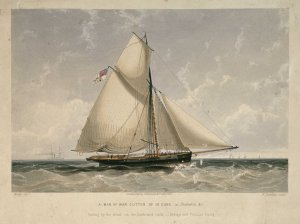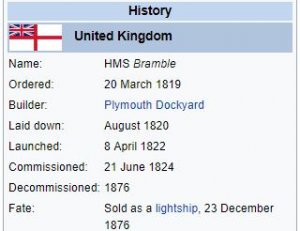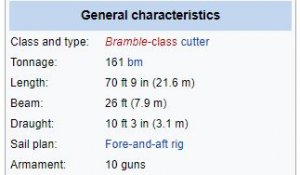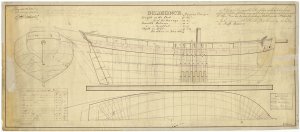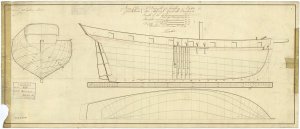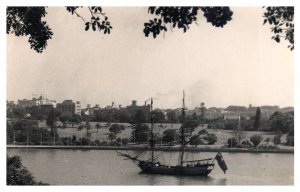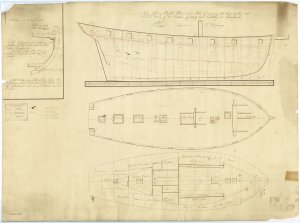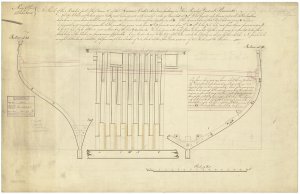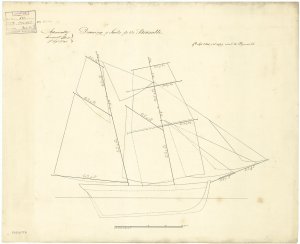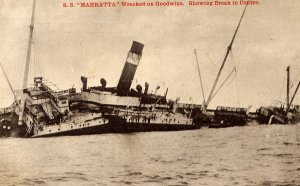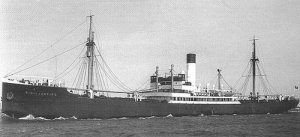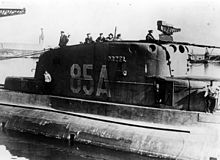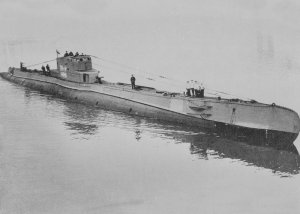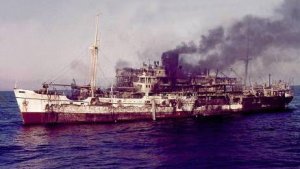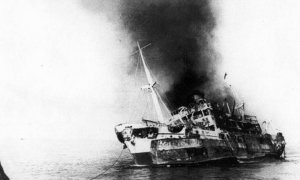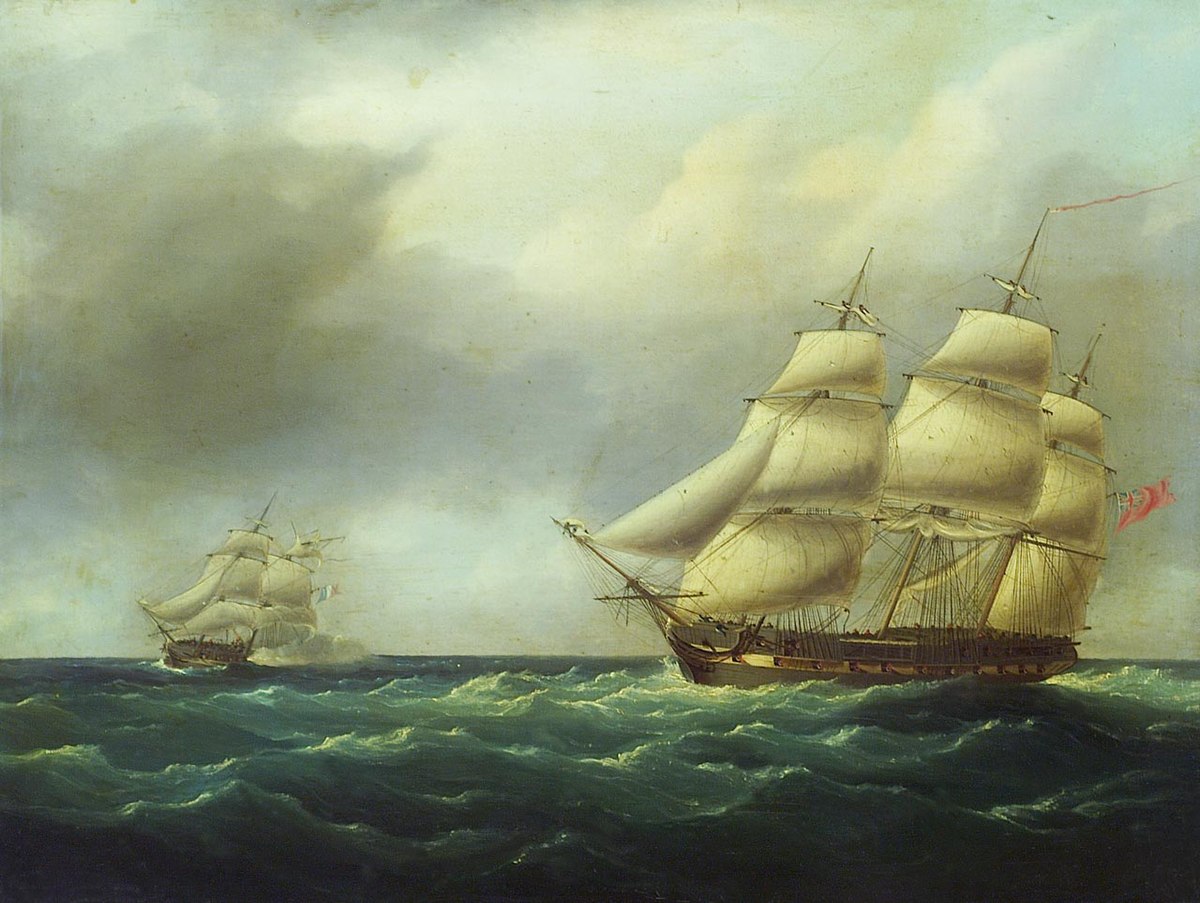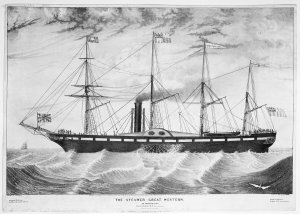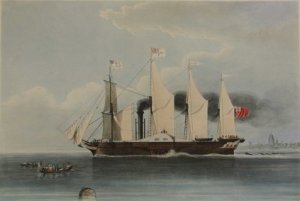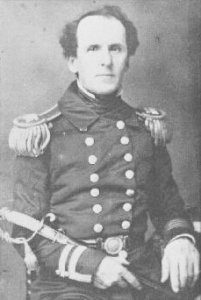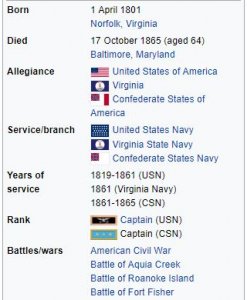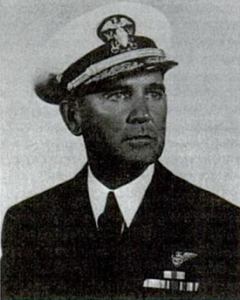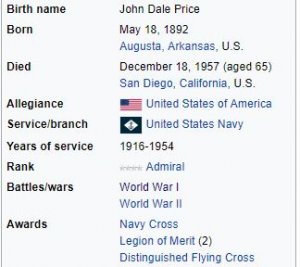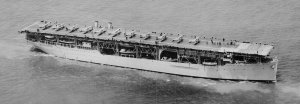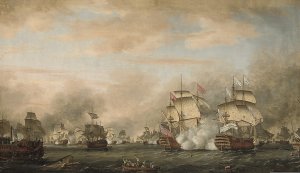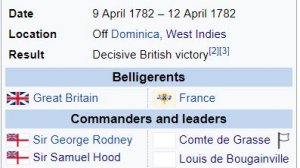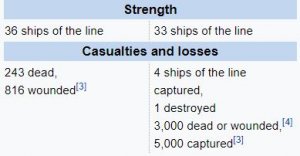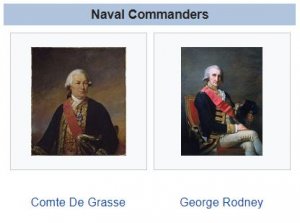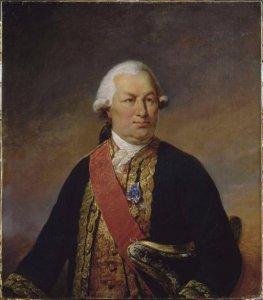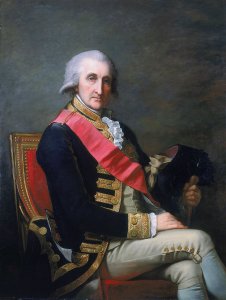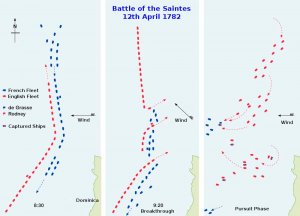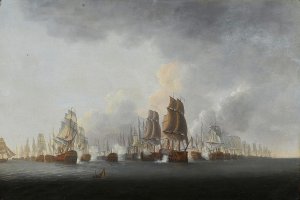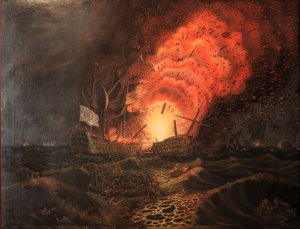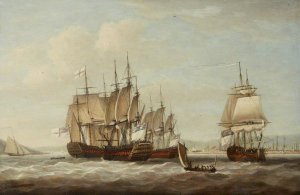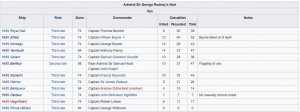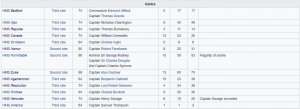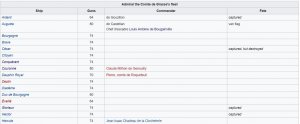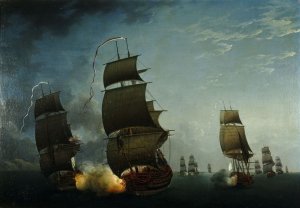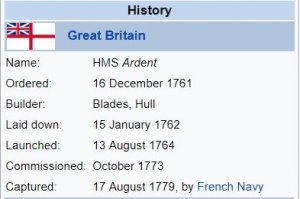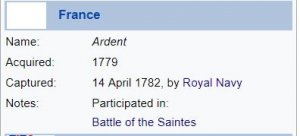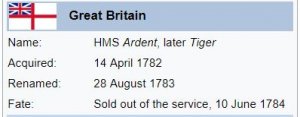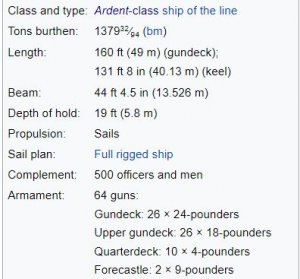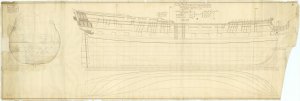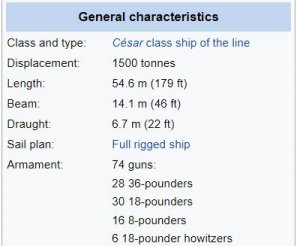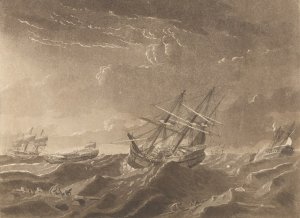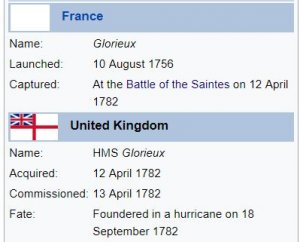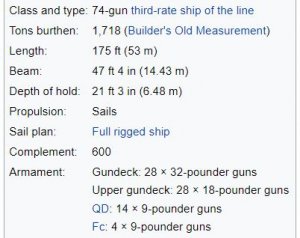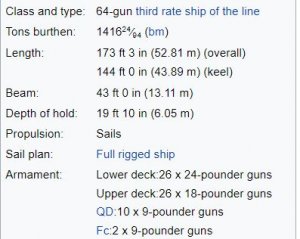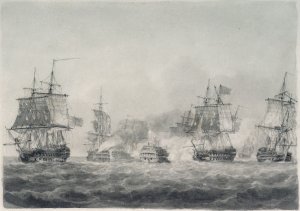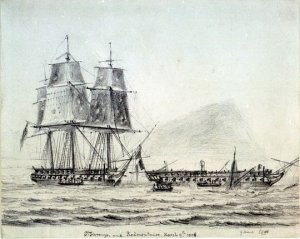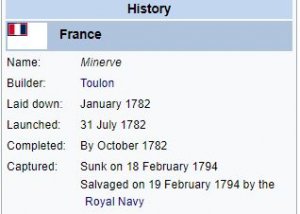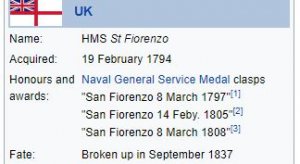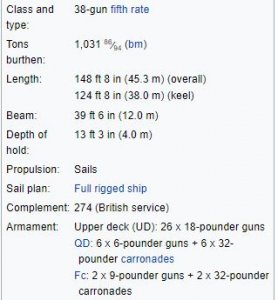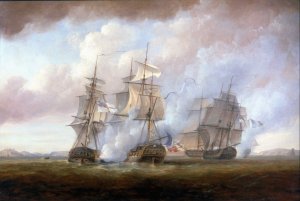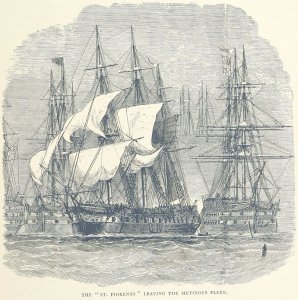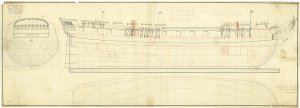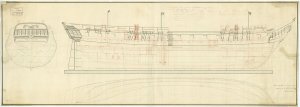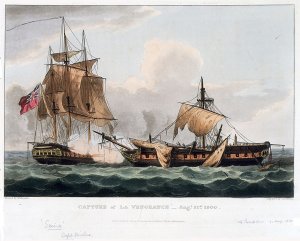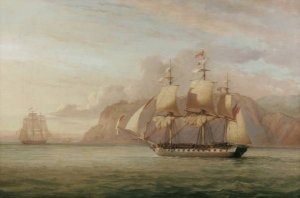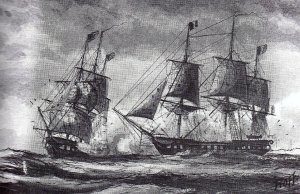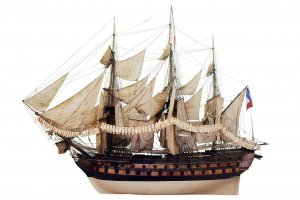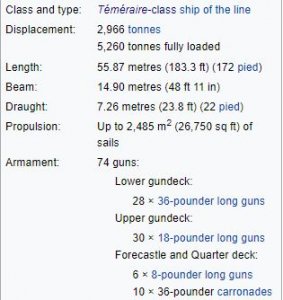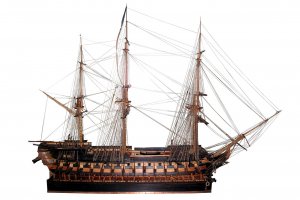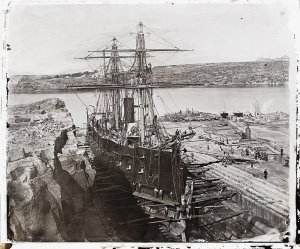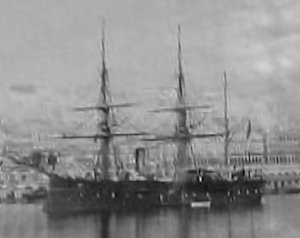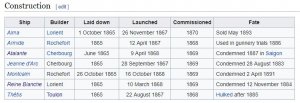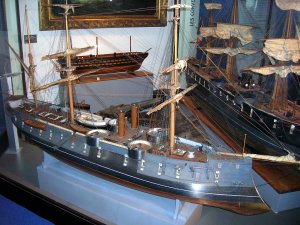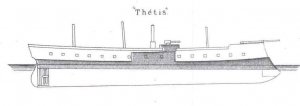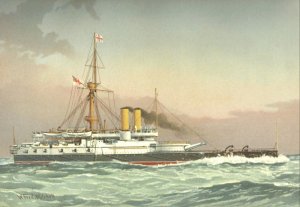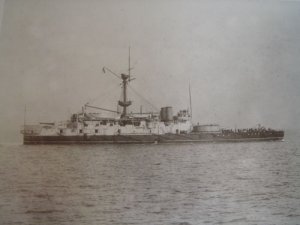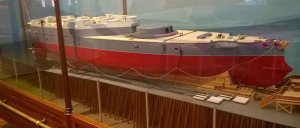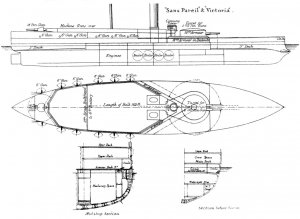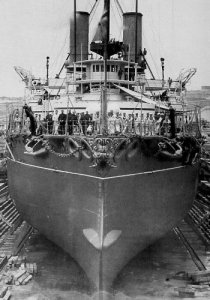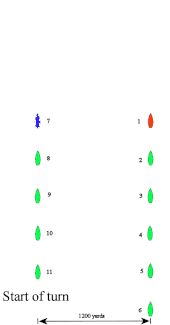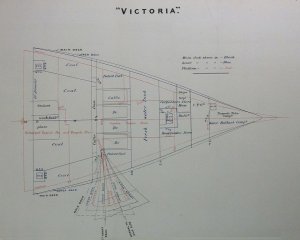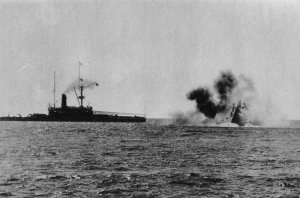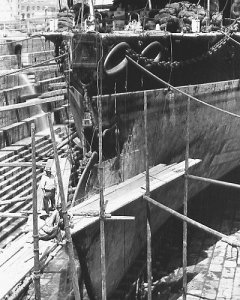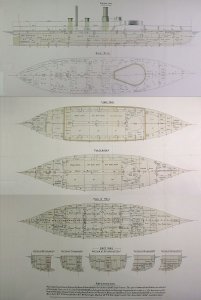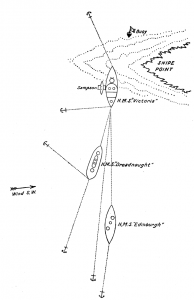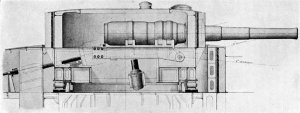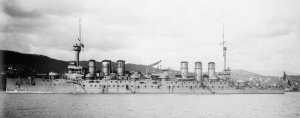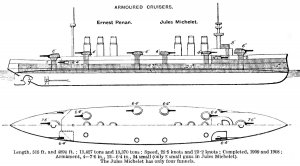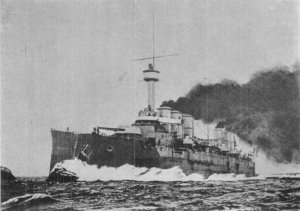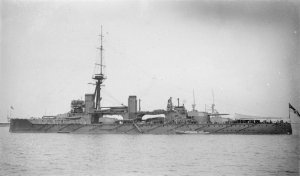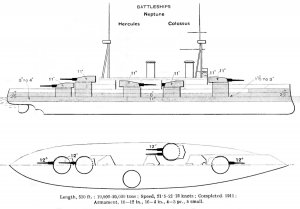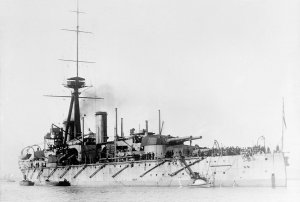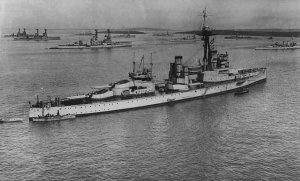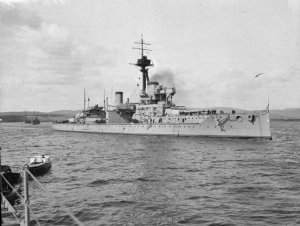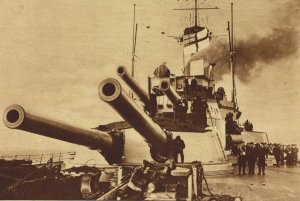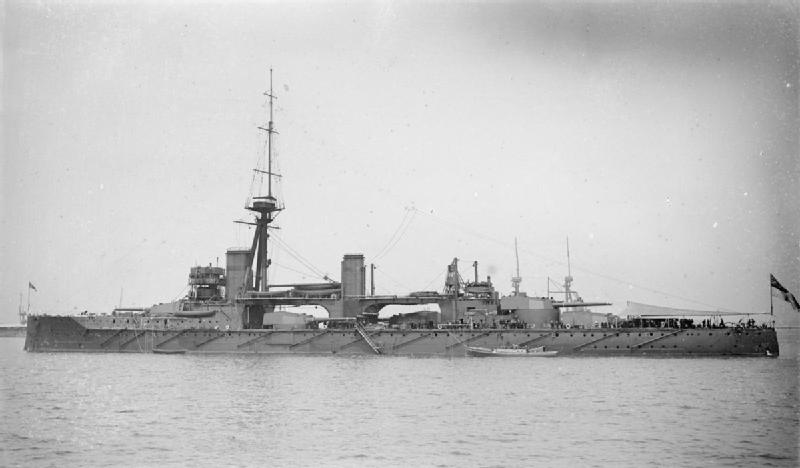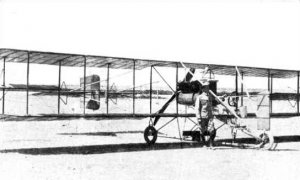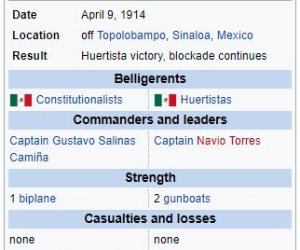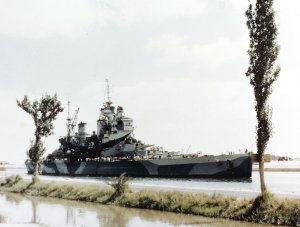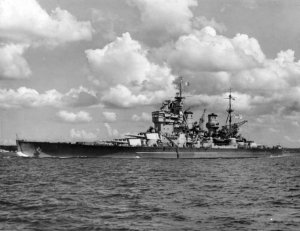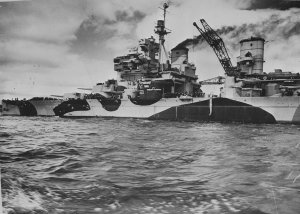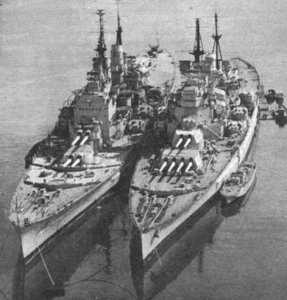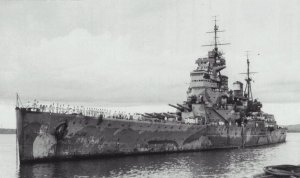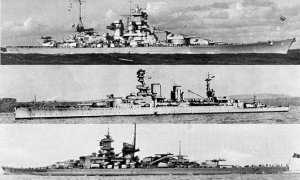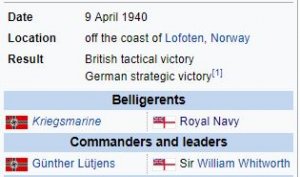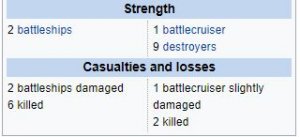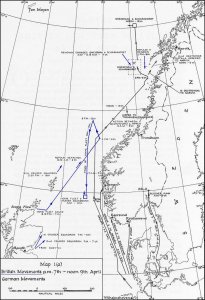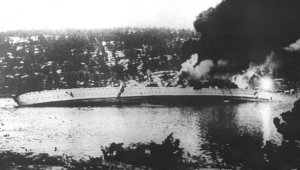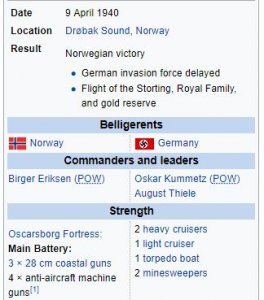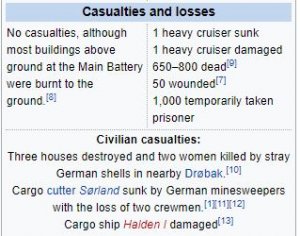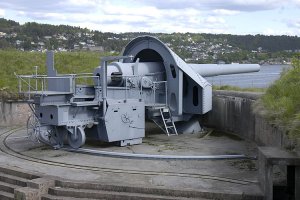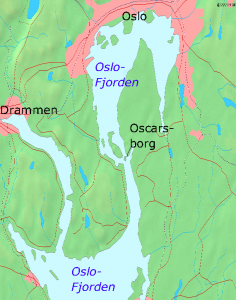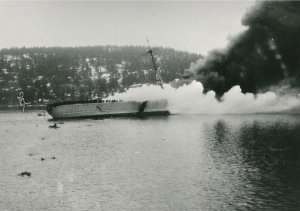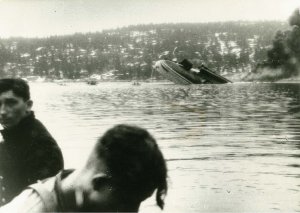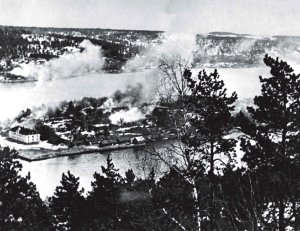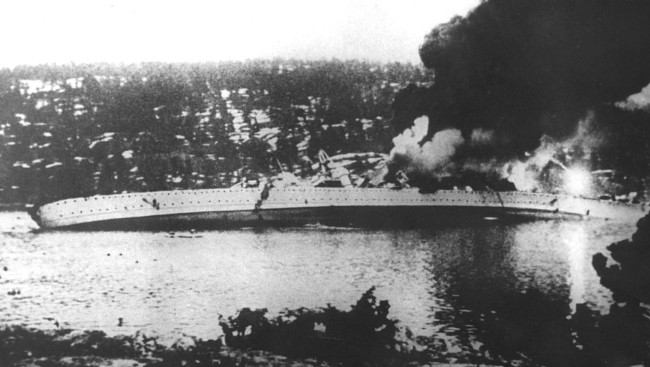Today in Naval History - Naval / Maritime Events in History
8 April 1807 – Launch of Charlemagne, a Téméraire class 74-gun ship of the line of the French Navy, part of the shorter Borée subtype.
Charlemagne was a Téméraire class 74-gun ship of the line of the French Navy, part of the shorter Borée subtype.
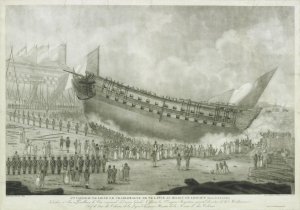
Launch of Charlemagne before Napoléon.
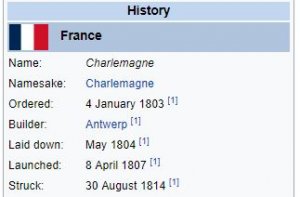
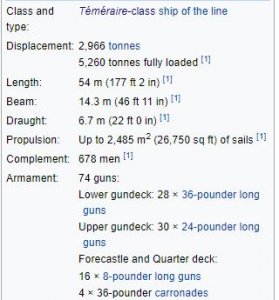
Charlemagne was the first ship of the line to be built in Antwerp according to the wishes of Napoléon, who wanted to expand the French Navy by exploiting shipyards in Belgium, the Netherlands and Italy. In 1807, she was stationed in Vlissingen under Commander Dupotet, in the squadron of Vice-Admiral Missiessy. She aided in the defence of Antwerp against the amphibious raid led by Chatham, and again during the Siege of Antwerp of 1814.
After the Bourbon Restoration, on 30 August 1814, Charlemagne was transferred to the Dutch Navy, as per the Treaty of Paris. The Dutch brought her into service as Naussau.
sistership

Scale: 1:48. Plan showng the body plan, stern board outline, sheer lines with inboard detail, and longitudinal half-breadth for 'Rivoli' (1812), a captured French Third Rate, as taken off at Portsmouth Dockyard after fitting as 74-gun Third Rate, two-decker. Signed by Nicholas Diddams [Master Shipwright, Portsmouth Dockyard, 1803-1823]
The Téméraire-class ships of the line were class of a hundred and twenty 74-gun ships of the line ordered between 1782 and 1813 for the French navy or its attached navies in dependent (French-occupied) territories. Although a few of these were cancelled, the type was and remains the most numerous class of capital ship ever built.[citation needed]
The class was designed by Jacques-Noël Sané in 1782 as a development of the Annibal and her near-sister Northumberland, both of which had been designed by him and built at Brest during the 1777-1780 period. Some dozen ships were ordered and built to this new design from 1782 to 1785, and then the same design was adopted as a standard for all subsequent 74s during the next three decades as part of the fleet expansion programme instituted by Jean-Charles de Borda in 1786.
The design was appreciated in Britain, which eagerly commissioned captured ships and even copied the design with the Pompée and America class.

Variants from basic design
While all the French 74-gun ships from the mid-1780s until the close of the Napoleonic Wars were to the Téméraire design, there were three variants of the basic design which Sané developed with the same hull form of Téméraire. In 1793 two ships were laid down at Brest to an enlarged design; in 1801 two ships were commenced at Lorient with a slightly shorter length than the standard design (with a third ship commenced at Brest but never completed); and in 1803 two ships were commenced at Toulon to a smaller version (many more ships to this 'small(er) model' were then built in the shipyards controlled by France in Italy and the Netherlands) - these are detailed separately below.
Small Variant (Pluton or Borée group – 24 ships launched)
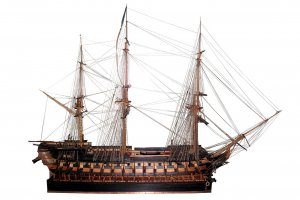
Rivoli, fitted with the camels that allowed her to cross the shallow banks before Venice harbour.
Starting with the prototypes Pluton and Borée in 1803, a smaller version of the Téméraire class, officially named petit modèle, was designed by Jacques-Noël Sané to be produced in shipyards having a lesser depth of water than the principal French shipyards, primarily those in neighbouring states under French control and in foreign ports which had been absorbed into the French Empire such as Antwerp. The revised design measured 177 feet 7 inches on the waterline, 180 feet 1 inch on the deck, and 46 feet 11 inches moulded breadth. The depth of hull was 9 inches less than that in the "regular" Téméraire design.
Pluton class – A revised design for Téméraire class, by Jacques-Noël Sané, described officially as "the small model" specially introduced to be constructed at shipyards outside France itself (the first pair were built at Toulon) where they lacked the depth of water required to launch 74s of the Téméraire Class.
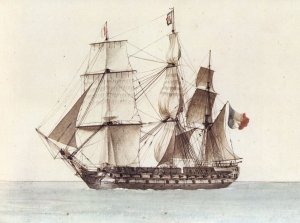
Portrait of Borée on 12 April 1807, by Antoine Roux
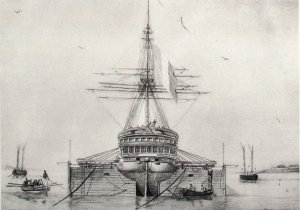
Mont Saint-Bernard fitted with Ship Camels
https://en.wikipedia.org/wiki/French_ship_Charlemagne_(1809)

 en.wikipedia.org
https://collections.rmg.co.uk/colle...el-343464;browseBy=vessel;vesselFacetLetter=R
en.wikipedia.org
https://collections.rmg.co.uk/colle...el-343464;browseBy=vessel;vesselFacetLetter=R
8 April 1807 – Launch of Charlemagne, a Téméraire class 74-gun ship of the line of the French Navy, part of the shorter Borée subtype.
Charlemagne was a Téméraire class 74-gun ship of the line of the French Navy, part of the shorter Borée subtype.

Launch of Charlemagne before Napoléon.


Charlemagne was the first ship of the line to be built in Antwerp according to the wishes of Napoléon, who wanted to expand the French Navy by exploiting shipyards in Belgium, the Netherlands and Italy. In 1807, she was stationed in Vlissingen under Commander Dupotet, in the squadron of Vice-Admiral Missiessy. She aided in the defence of Antwerp against the amphibious raid led by Chatham, and again during the Siege of Antwerp of 1814.
After the Bourbon Restoration, on 30 August 1814, Charlemagne was transferred to the Dutch Navy, as per the Treaty of Paris. The Dutch brought her into service as Naussau.
sistership

Scale: 1:48. Plan showng the body plan, stern board outline, sheer lines with inboard detail, and longitudinal half-breadth for 'Rivoli' (1812), a captured French Third Rate, as taken off at Portsmouth Dockyard after fitting as 74-gun Third Rate, two-decker. Signed by Nicholas Diddams [Master Shipwright, Portsmouth Dockyard, 1803-1823]
The Téméraire-class ships of the line were class of a hundred and twenty 74-gun ships of the line ordered between 1782 and 1813 for the French navy or its attached navies in dependent (French-occupied) territories. Although a few of these were cancelled, the type was and remains the most numerous class of capital ship ever built.[citation needed]
The class was designed by Jacques-Noël Sané in 1782 as a development of the Annibal and her near-sister Northumberland, both of which had been designed by him and built at Brest during the 1777-1780 period. Some dozen ships were ordered and built to this new design from 1782 to 1785, and then the same design was adopted as a standard for all subsequent 74s during the next three decades as part of the fleet expansion programme instituted by Jean-Charles de Borda in 1786.
The design was appreciated in Britain, which eagerly commissioned captured ships and even copied the design with the Pompée and America class.

Variants from basic design
While all the French 74-gun ships from the mid-1780s until the close of the Napoleonic Wars were to the Téméraire design, there were three variants of the basic design which Sané developed with the same hull form of Téméraire. In 1793 two ships were laid down at Brest to an enlarged design; in 1801 two ships were commenced at Lorient with a slightly shorter length than the standard design (with a third ship commenced at Brest but never completed); and in 1803 two ships were commenced at Toulon to a smaller version (many more ships to this 'small(er) model' were then built in the shipyards controlled by France in Italy and the Netherlands) - these are detailed separately below.
Small Variant (Pluton or Borée group – 24 ships launched)

Rivoli, fitted with the camels that allowed her to cross the shallow banks before Venice harbour.
Starting with the prototypes Pluton and Borée in 1803, a smaller version of the Téméraire class, officially named petit modèle, was designed by Jacques-Noël Sané to be produced in shipyards having a lesser depth of water than the principal French shipyards, primarily those in neighbouring states under French control and in foreign ports which had been absorbed into the French Empire such as Antwerp. The revised design measured 177 feet 7 inches on the waterline, 180 feet 1 inch on the deck, and 46 feet 11 inches moulded breadth. The depth of hull was 9 inches less than that in the "regular" Téméraire design.
Pluton class – A revised design for Téméraire class, by Jacques-Noël Sané, described officially as "the small model" specially introduced to be constructed at shipyards outside France itself (the first pair were built at Toulon) where they lacked the depth of water required to launch 74s of the Téméraire Class.
- Pluton 74 (launched 17 January 1805 at Toulon) – captured by the Spanish at Cadiz in June 1808, retained the same name, later renamed Montañes, BU 1816.
- Borée 74 (launched 27 June 1805 at Toulon) – BU 1827
- Génois 74 (launched 17 August 1805 at Genoa) – BU 1821
- Charlemagne 74 (launched 8 April 1807 at Antwerp) – Transferred to the Netherlands Navy in 1814 and renamed Nassau.
- Commerce de Lyon 74 (launched 9 April 1807 at Antwerp) – BU 1830
- Anversois 74 (launched 7 June 1807 at Antwerp) – BU 1819
- Duguesclin 74 (launched 20 June 1807 at Antwerp) – BU 1820
- César 74 (launched 21 June 1807 at Antwerp) – transferred to the Netherlands Navy on 1 August 1814 and renamed Prins Frederik.
- Dantzig 74 (launched 15 August 1807 at Antwerp) – renamed Achille in August 1814, BU 1815
- Ville de Berlin 74 (launched 6 September 1807 at Antwerp) – renamed Atlas in July 1815, BU 1819
- Pultusk 74 (launched 20 September 1807 at Antwerp) – Transferred to the Netherlands Navy on 1 August 1814 and renamed Waterloo.
- Breslaw 74 (launched 3 May 1808 at Genoa) – condemned 1836.
- Dalmate 74 (launched 21 August 1808 at Antwerp)
- Albanais 74 (launched 2 October 1808 at Antwerp)
- Rivoli 74 (launched 6 September 1810 at Venice) – captured by the British in an action in the Adriatic in February 1812 and added to the RN under the same name, stricken 1819.
- Mont Saint Bernard 74 (launched 9 June 1809 at Venice)
- Régénérateur 74 (launched July 1811 at Venice)
- Royal Hollandais 74 (begun 1806 at Flushing, frames taken to Woolwich after Flushing was taken by the British, and there launched as HMS Chatham on 14 February 1812)
- Castiglione 74 (launched 2 August 1812 at Venice)
- Royal Italien 74 (launched 15 August 1812 at Venice)
- Piet Hein 74 (launched 1 May 1813 at Rotterdam) – abandoned December 1813 to Netherlands, who renamed her Admiraal Piet Hein
- Couronne 74 (launched 26 October 1813 at Amsterdam) – abandoned December 1813 to Netherlands, who renamed her Prins Willem de Eerste
- Montebello 74 (launched 7 November 1815 at Venice) – completed by Austrians, who renamed her Cesare but never finished her
- Audacieux 74 (launched October 1816 at Amsterdam for Netherlands Navy, renamed Wassenaar)
- Polyphème 74 (launched July 1817 at Amsterdam for Netherlands Navy, renamed Holland)

Portrait of Borée on 12 April 1807, by Antoine Roux

Mont Saint-Bernard fitted with Ship Camels
https://en.wikipedia.org/wiki/French_ship_Charlemagne_(1809)




